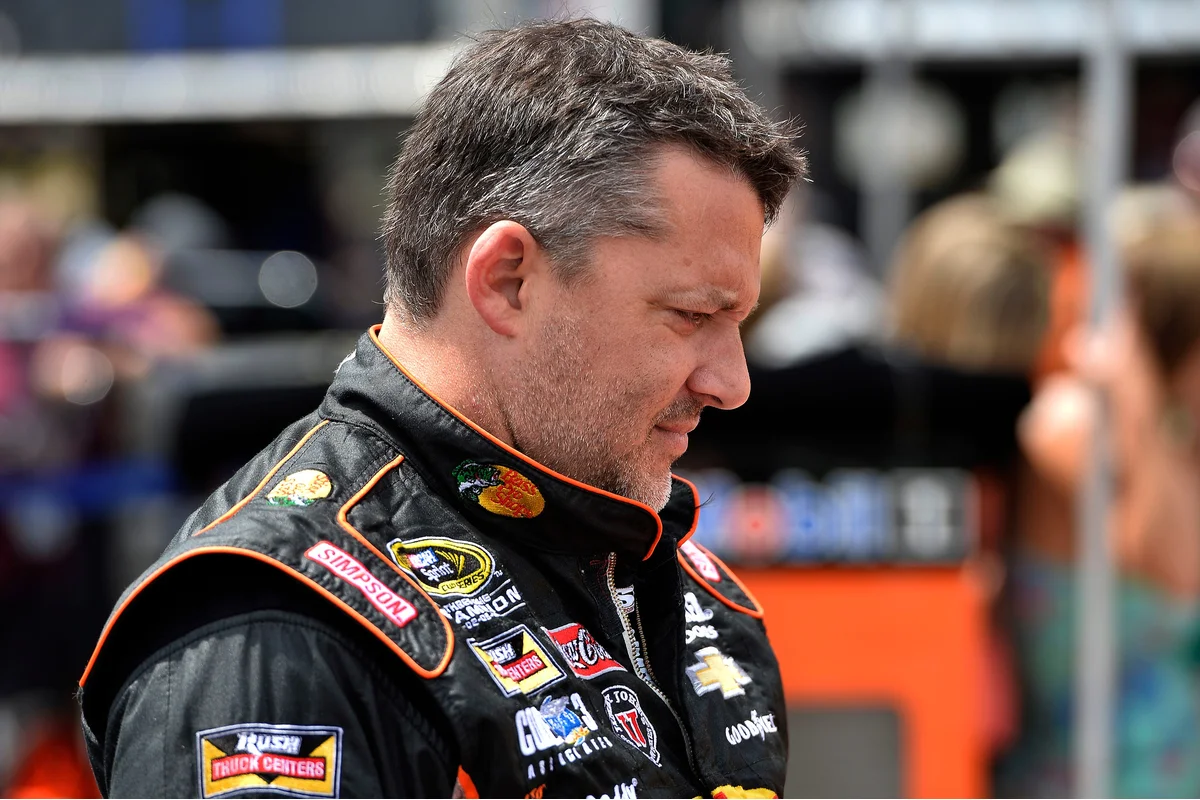Tony Stewart’s career highlights reflect a remarkable journey that began with a modest $12.70 paycheck for working as a light and sound technician in high school, eventually leading him to become the only driver to clinch both IndyCar and NASCAR championships. Stewart’s path from the school auditorium to motorsports’ highest accolades reveals a story marked by resilience, key achievements, and notable shifts within the racing industry.
A Modest Childhood Job Sets the Stage
Born in 1971, Tony Stewart’s early life involved competitive go-karting, with his first championship victory arriving in 1980. Before building a legendary name on the racetrack, Stewart gained valuable work experience during his time as a student. In a 2015 interview, he reminisced about his initial step into the workforce:
“My first official paycheck came from the Bartholomew County School Corporation. I worked at the school auditorium and it was like $12.70 for working a show.”
— Tony Stewart, Driver/Team Owner
Reflecting further on that period, Stewart clarified his duties and the context of the role:
“Lighting and sound. I’d have been probably a junior in high school….It was just a job while I was in school. Actually, I’d had jobs before that, but that was the first job where I got an official paycheck.”
— Tony Stewart, Driver/Team Owner
These early jobs marked the first official entries on Stewart’s résumé, establishing a strong work ethic that he would later bring to the world of professional racing.
Achievements in Racing Across Multiple Disciplines
Stewart’s racing career quickly accelerated beyond local karting trophies. He has been recognized as the only driver to secure championships in both IndyCar and NASCAR, distinguishing himself in motorsport history. Recently, Stewart wrapped up his sophomore season in NHRA, capturing a fifth-place finish in the standings. Among his most recent accomplishments, he was this season’s regular-season champion and received Rookie of the Year recognition last year.
Initially entering the NHRA circuit as a substitute for his wife, Leah Pruett, Stewart is set to compete against her in 2026, representing Elite Motorsports, while Pruett continues to race for Tony Stewart Racing Nitro.
Conflict and Contrasts with NASCAR Leadership
Recent legal documents surfaced during NASCAR’s antitrust case, highlighting friction between Stewart’s approach to racing and that of the sport’s leadership. Executives Steve Phelps and Steve O’Donnell reportedly shared critical text messages regarding Denny Hamlin’s participation in Stewart’s now-defunct SRX series, reflecting ongoing tensions within the sport.
A 2018 conversation between Tony Stewart and Kyle Petty has gained renewed attention. Stewart spoke candidly about a pivotal meeting with NASCAR officials:
“I remember 20 of us drivers went about five years ago, maybe six years ago, and sat with NASCAR and said, These are the things that we think will help make the sport better. And a person in NASCAR that I won’t name sat there and looked me square in the eye and said that everything that we were talking about and what I was saying was 180 degrees backwards from what they thought was going to fix it.”
— Tony Stewart, Driver/Team Owner
Stewart’s reflections during this interview suggested his growing disillusionment with NASCAR. He indicated this was the moment he began to question the direction of the sport and its leadership, noting a “bad shape” for its future.
Transitions in Stewardship and Motorsport Legacy
Tony Stewart ended his full-time career as a driver in 2016 but remained influential as a team owner through Stewart-Haas Racing (SHR). Despite continuing as a significant figure, Stewart ultimately decided to close SHR in 2024, a decision occurring just one year after the SRX series—an initiative featuring veteran drivers—was discontinued following its three-year duration.
As SHR’s operations drew to a close, its charters were transferred to 23XI Racing and Front Row Motorsports, reshaping the landscape of top-level racing teams. These changes underscore the shifting alliances and restructuring that persist in motorsports, demonstrating both the instability and competitive evolution within NASCAR and related series.
Tony Stewart’s career highlights, from his earliest job at the Bartholomew County School Corporation to his dominance across multiple racing circuits, echo a story of ambition forged through humility and perseverance. As the sport navigates ongoing challenges and Stewart ventures into new competitive chapters, the narrative remains one of complexity, uncertainty, and enduring influence in racing history.
